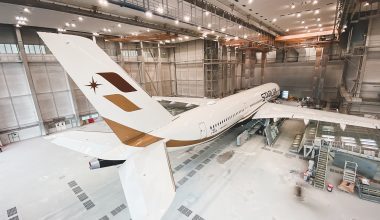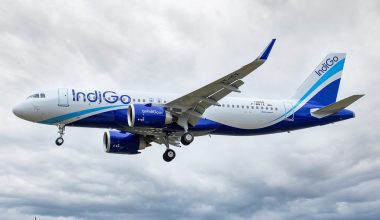The aviation industry has been continuously dominated by the Airbus and Boeing families, among which Airbus A320 and Boeing 737 are the most prominent products which have been a hit in the past few decades. There haven’t been any new aircraft in the industry from any other banner that could possibly keep up with the success and reach of these two air vessels.
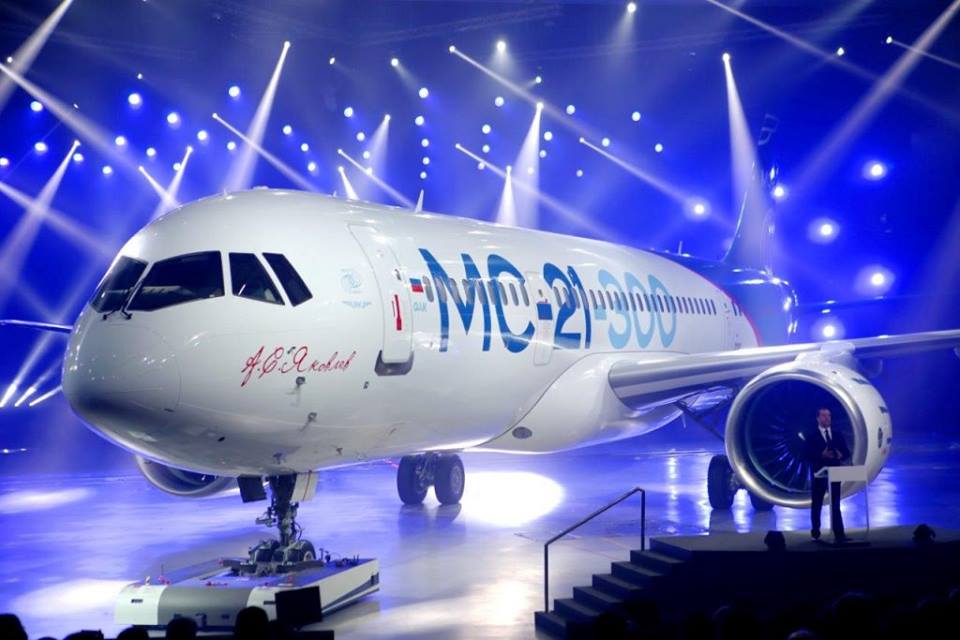
Read More: Russia’s MC-21 Maiden Flight Set for April
However, with the launch of the Russian narrowbody MC-21 aircraft developed by the Russian manufacturer, Irkut, it is expected that the duopoly of Airbus and Boeing will receive a fair competition. The MC-21-300 isn’t just an extraordinary vessel that is on par to compete with the French and American companies, but it has also redefined the cost of the jetliners introducing a new level of efficiency on air travel.
Everything You Need To Know About MC-21-300
The idea to create this superb air-beast came from UAC’s(Russia’s United Aircraft Corporation) goal to produce an aircraft that could replace their three-engined aircraft Tupolev TU- 154. The responsibility of designing such a prominent aircraft was given to Irkut, a branch of the Russian United Aircraft and also the parent company of another Russian aircraft company ‘Yakovlev’.

Irkut, however, didn’t take the aircraft project as just another fine upgrade to outshine its predecessor, Tupolev TU- 154, but, also as an opportunity to give fair competition to the Airbus and Boeing family which had been ruling the global market of aviation. UAC and Irkut aimed for a vessel that could outperform these two phenomenal aircraft, improving in every aspect like efficiency, fuel, cost, list price, and weight for an even faster and reliable travel experience. MC-21 has been built with the capacity to board 163 passengers in a two-class configuration, first-class, and economy class(16 passengers in the first-class cabin and 147 in the economy-class cabin). The length of MC-21 is 42.2 meters with a height of 11.5 meters and a wingspan of 35.9 meters. It can carry a maximum weight of 79,250 kg and has a maximum range of 3,240 miles with a two-class configuration and 49 cubic meters cargo volume.
Read More: Boeing Vs Airbus, Which of these is the best, detailed overview
One of the most remarkable things about MC- 21 is that it is completely made from locally produced composite materials with the use of infusion technology. The infusion technology has allowed the wings of this aircraft have a high aspect ratio, 11:5 higher than older jetliners of the same density. The composite wings were originally supposed to designed by Toray Suppliers and Hexcel, Japanese and American industrial companies. But, work with these two international companies was suspended by Irkut and UAC in 2018 and the project was handed over to a Russian company AeroComposite based in Ulyanovsk.

On the naming regards of the aircraft, the name MC-21-300 was derived from the Russian “Магистральный Самолёт 21 века”, which can be translated into “Mainline Aircraft of the 21st Century”, certainly a revolutionary fitting name considering the potentiality of the aircraft.
Development of MC-21 aircraft
The development project of MC-21-300 was ongoing since 2006 and it took almost 15 years for the aircraft to be ready for the testing phase as the project had to face delays due to its complicated relations with the USA. The UAC and Irkut had originally planned to import the important components like engines and composites from the US, however, the uneasy relations between the two-nation pushed and continuous threats from the US sanction to the vitality of the project pushed its launch date pretty. So, Russia decided to take the matters into their own hands and produced its own composites. The leading Russian chemist, technologist, experts, and academics from the Moscow State University and Rosatom participated in the production of the domestic composite.
Read More: First PD-14 aircraft engine arrives Irkutsk aviation plant for the installation on MC-21
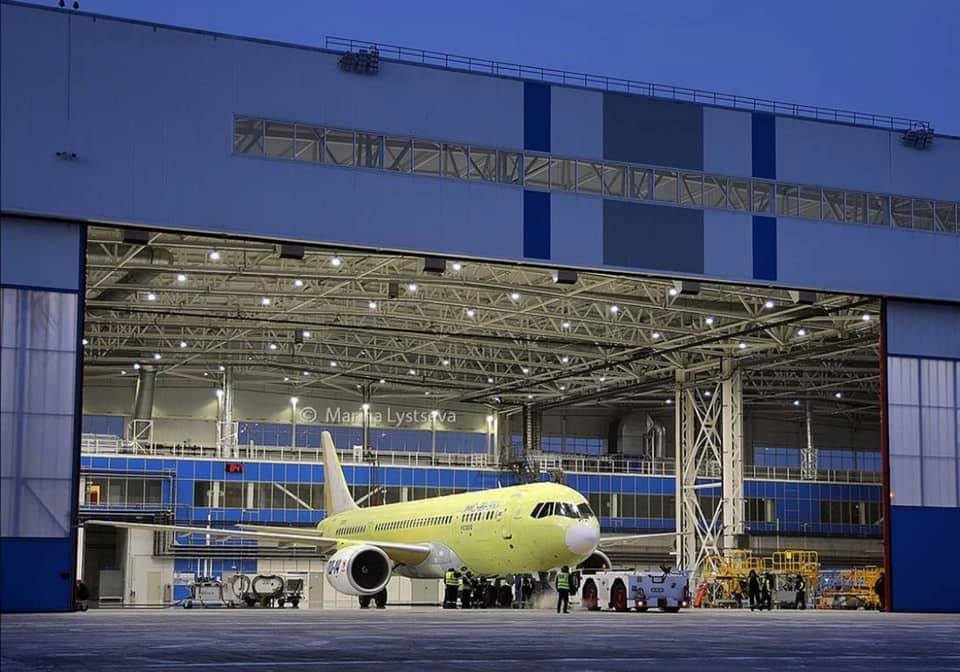
The Russian MC-21-300 took its first-ever flight on 28th May 2017 in Irkutsk at an elevation of 1,000 meters and speed of 300 km/h. The flight test ride lasted for 30 minutes where the flight stability and control were thoroughly checked. The flight commander of the first-ever MC-21 aircraft test flight, Oleg Kononenko reported the flight went in a normal mode and didn’t face any obstacles that could prevent the continuation of further flying tests. His co-pilot at the time, Roman Taskayev also confirmed the smooth functionality and outright performances without any glitches.
Competitors In Market
Initially, the MC-21 project started to give competition to the Airbus model A320ceo and 737NG from the Boeing family. But, Airbus and Boeing have already have made significant upgrades like Airbus A320neo and Boeing 737 MAX 8, so, the MC-21 is expected to face tight competition in the market earlier than the period they had expected.
However, when it comes to performance, the MC-21-300 isn’t that far behind the two of its biggest competitors in the market. The A320neo which is overall 37.57m and with a seat capacity of 150-180 passengers has a travel range of approx. 3,400 miles. Similarly, Boeing 737 MAX 8 with 210 maximum seat capacities, 39.52 meters in length, and the LEAP-1B engine from CFM International can cover a distance up to 3,550 miles. Although the competition may be neck-to-neck for MC-21 in the market, it isn’t behind any other major upgrades of the dominating companies, the stability, comfort, and capability of this aircraft is on par with all the new and existing competitors, and miles ahead from the previous generation jetliners.

Therefore, having all the upgrades and modern technology on par with any other competitors, the competition for MC-21-300 is expected to come at other factors besides specifications. The Airbus and Boeing families have been dominating the aviation industry for decades, so the aircraft’ produced by these giant aviation techs undoubtedly comes with high recommendations. Boeing 737 has even set its name in the Guinness Book of World Records when it sold its 10,000th aircraft in March 2018. Similarly, the Airbus A320 hasn’t been far behind Boeing, catching up with its 10,000th sale in October 2020.
Price Factors of MC-21 aircraft
Considering all the variables, the competition is anticipated to be tough for the newcomer like MC-21-300 in the aviation market. However, the Russian aircraft has a cost advantage in the market with which it could probably topple other competitors in the aviation market.

The ‘Russian Aviation Insider’ revealed the price of this magnificent aircraft which was about $96.1 million set by Irkut in August 2018. On the other hand, the new upgrades from Boeing and Airbus family, A320neo, and 737 MAX8 were priced at $110.6 million and $121.6 million respectively in early 2021. Thus, the MC-21 with high performance and cost-efficiency features is still considered the new innovative leap in the aviation industry that could possibly dominate the market.
Future Prospects of MC-21 aircraft
The MC-21 variant still uses the PW1400G engines produced by Pratt & Whitney, the daughter company of the USA’s United Technologies Corporation (UTC). Considering the deteriorating relationship with the US and the possibility of suspension of deliveries by the US, UAC and Irkut turned to Aviadvigatel’s PD-14 turbofans engines for the latter MC-21-310 variants and even completed a successful test flight in December 2020.
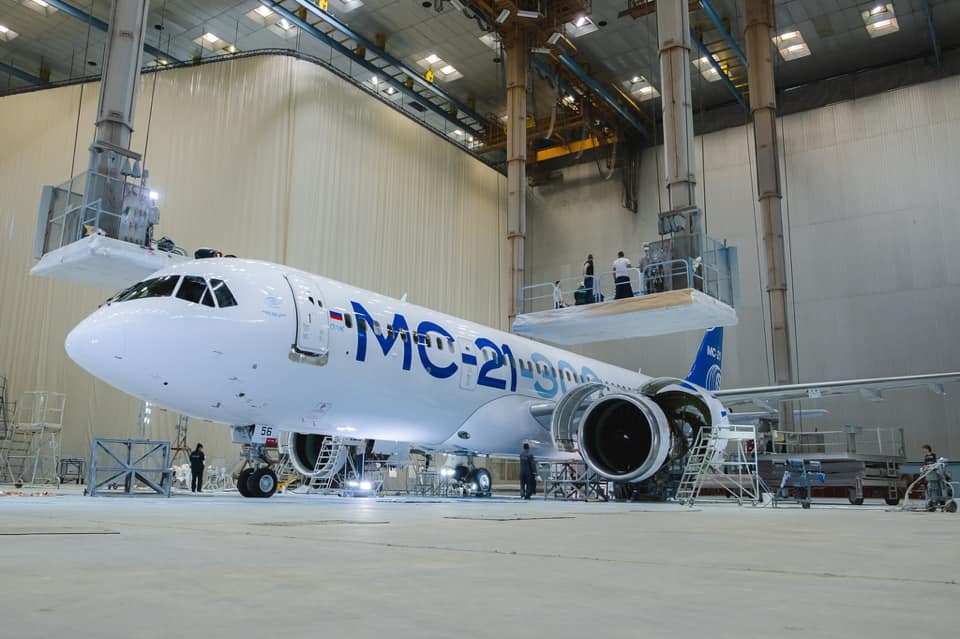
The aircraft that was made within the nation without any dependency on the west, lasted 1 hr 25 minutes on the air completing an outstanding engine and stability test. The fitting of the domestic composites and engines in the MC-21-300 and MC-21-310 became the latest milestone in the Russian aviation industry, to opt-out itself from its dependency on the western industries.
When Will MC-21 Delivered?
The test flights needed to certify the aircraft had been put on hold due to the outbreak of the Covid-19 virus, the test flights were then resumed in April 2020 by United Aircraft Russia (UAC). To receive the Russian certification the flight has to make 650 successful trials covering various assessments and extreme angles as well as flutter tests. The four aircrafts participating in the qualifying test completed over 300 test flights by 2020 and are expected to complete the trial phase by the end of 2021. The narrow-body jetliner has been developed in two variants one with American Pratt & Whitney PW-140 engine and another with Aviadvigatel’s PD-14 turbofan engine, so which variant will be the UAC initial launch is yet to be confirmed.
The Russian prime minister, Mikhail Mishustin also made an announcement about the nation’s plan to mass-produce MC-21-300 in a speech to the State Duma, the lower house of the Federal Assembly of Russia in May 2021. Mishustin laid out the UAC’s goal to mass-produce the Boeing and Airbus challengers MC-21, Light-engine Baikal, and Regional Turboprop 1L-114-300. With the MC-21’s expected certification completion by the end of 2021, Russia is planning to certify its single-aisle jetliner by the end of 2021 and make its first deliveries in 2022.
Also, UAC’s new aircraft 11-114-300 announced together with MC-21 made its first flight in December 2020 at the Zhukovsky airfield (developed by the PJSC Divison of UAC) which is expected to complete its certification in 2022. The latter aircraft, Regional Turboprop 1L-114-300 has been designed to operate in harsh conditions from the North Siberian region to the Far East region.
The 1L-114-300 is also expected to another revolutionary aircraft from the UAC which has been assumed to become a basic vehicle for the development of regional transportation with its optimal cabin capacity (68 max passenger up to 870 miles).


